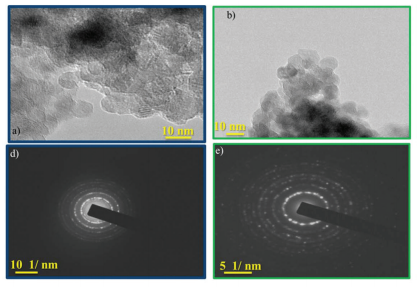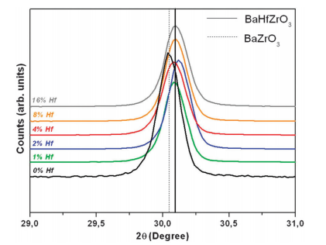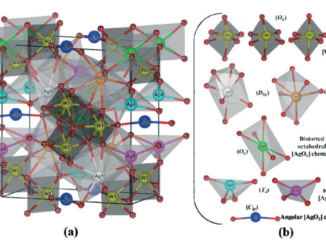
A relationship between structural and electronic order-disorder effects and optical properties in crystalline TiO2 nanomaterials
Abstract: The focus of this paper is on the analysis of the structural and electronic order-disorder effects at long, medium and short ranges of titanium dioxide (TiO2) nanoparticles synthesized by the sol-gel process followed by the microwave-assisted solvothermal (MAS) method at low temperatures and short reaction times. X-ray diffraction (XRD), Rietveld refinement, micro-Raman (MR) spectroscopy, transmission electron microscopy (TEM) and X-ray spectroscopy (EDX) were used to characterize the TiO2 nanoparticles. Optical properties were investigated by ultraviolet-visible (UV-vis) and photoluminescence (PL) measurements performed at room temperature. XRD and Rietveld refinement confirmed the presence of the anatase and brookite phases; nonetheless anatase is the major phase. The X-ray photoelectron spectroscopy (XPS) analysis revealed the presence of only Ti4+ but the nonstoichiometry revealed that TiO2 NPs contain defects assigned to oxygen vacancies that lead to structural and electronic order-disorder effects observed by band gap narrowing and PL wide band emission. These intermediary energy levels (shallow and deep levels) created within the band gap act as acceptors/ donors of electrons and recombination centers. The oxygen vacancies (VOx, VO center dot and VO center dot center dot) responsible by degree of structural order-disorder are related to distortions (tilts) on the [TiO6] octahedron and changes in the bond lengths and bond angles between oxygen and titanium atoms that gave rise to new species of cluster makers such as [TiO6]’, [TiO5 center dot V-O(x)], [TiO5 center dot VO center dot] and [TiO5 center dot VO center dot center dot]. This structural transformation is consistent with a redistribution of electron density from highly ordered [TiO6](x) clusters which form distorted [TiO6]’ as well as complex [TiO5 center dot V-O(x)], [TiO5 center dot VO center dot] and [TiO5 center dot VO center dot center dot] clusters assigned to oxygen vacancies which were understood as displacements in the oxygen atoms’ position in the bond lengths (Ti-O).
Author(s): Silva, E; La Porta, FA; Liu, MS; Andres, J; Varela, JA; Longo, E
DALTON TRANSACTIONS
Volume: 44 Pages: 3159-3175 Published: 2015
DOI: 10.1039/c4dt03254c




